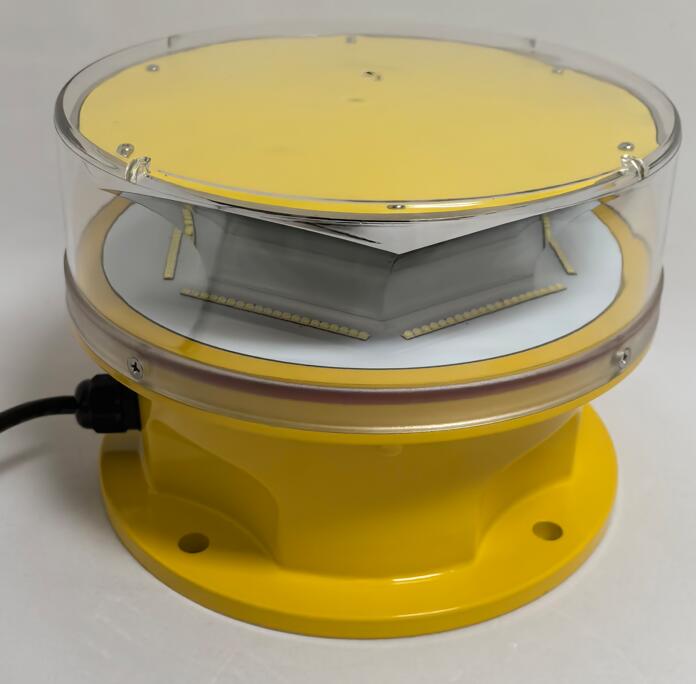In an era of towering skyscrapers, expansive wind farms, and vast communication networks, ensuring the safety of low-flying aircraft is a critical concern. Obstruction warning lights serve as an essential safeguard, alerting pilots to potential hazards and preventing catastrophic collisions. This article examines the significance, types, and technological advancements of obstruction warning lights, emphasizing their role in modern aviation and infrastructure safety.
The Importance of Obstruction Warning Lights
Tall structures pose a significant risk to aircraft, particularly during nighttime or adverse weather conditions. Obstruction warning lights mitigate this risk by providing visible and sometimes synchronized signals that help pilots identify obstacles from a distance. Their key functions include:
Preventing Mid-Air Collisions – By marking high-rise buildings, towers, and wind turbines, these lights reduce the likelihood of accidents.
Ensuring Regulatory Compliance – Aviation authorities worldwide mandate their installation on structures exceeding certain heights.
Supporting Low-Visibility Navigation – In fog, rain, or darkness, these lights serve as critical visual references for pilots.
Types of Obstruction Warning Lights
Different structures require varying intensities and configurations of obstruction warning lights based on height and location. The primary classifications include:
1. Low-Intensity Warning Lights (Type A & B)
Used for structures under 45 meters (148 feet).
Emit steady red light for nighttime visibility.
Common on buildings, cranes, and utility poles.
2. Medium-Intensity Warning Lights (Type C & D)
Required for structures between 45 and 150 meters (492 feet).

Can operate in steady red or flashing white modes.
Often installed on telecommunication towers and mid-rise structures.
obstruction warning lights
|
3. High-Intensity Warning Lights (Type E & F)
Mandatory for structures taller than 150 meters.
Emit powerful white flashes visible from long distances.
Used on skyscrapers, large wind turbines, and major broadcast towers.
4. Dual Lighting Systems
Combine steady red lights with synchronized white flashes for maximum visibility.
Frequently applied to very tall or complex structures.
Regulatory Standards and Compliance
To maintain global aviation safety, obstruction warning lights must adhere to strict regulations set by:
ICAO (International Civil Aviation Organization) – Provides international guidelines for obstacle lighting.
FAA (Federal Aviation Administration) – Governs U.S. standards, including light intensity and placement.
EASA (European Union Aviation Safety Agency) – Ensures compliance across European airspace.
These standards dictate color, flash patterns, and durability to ensure reliability under various environmental conditions.
Technological Innovations in Obstruction Warning Lights
Advancements in lighting technology have significantly improved the efficiency and functionality of obstruction warning lights:
LED Adoption – Modern lights use energy-efficient LEDs, offering longer lifespans and reduced maintenance.
Solar-Powered Solutions – Ideal for remote installations, solar-powered lights eliminate reliance on electrical grids.
Smart Monitoring Systems – Some models feature remote diagnostics to detect failures and optimize performance.
Adaptive Lighting – Adjusts brightness based on ambient conditions to minimize light pollution.
Challenges and Future Developments
Despite their effectiveness, obstruction warning lights face challenges such as:
Light Pollution Concerns – Excessive brightness can disrupt nearby communities, prompting the need for directional lighting.
Maintenance Demands – Harsh weather conditions require durable designs and regular inspections.
Future trends may include:
AI-Integrated Systems – Predictive maintenance and automated brightness adjustments.
Enhanced Synchronization – Improved coordination with air traffic control systems for real-time hazard alerts.
Obstruction warning lights are indispensable in safeguarding air travel and infrastructure. From urban skyscrapers to offshore wind farms, these lights ensure that pilots can navigate safely around obstacles. As technology evolves, obstruction warning lights will continue to advance, further enhancing aviation safety while addressing environmental and operational challenges.
By recognizing their vital role, we can better appreciate how these unassuming yet powerful lights contribute to a safer and more efficient airspace.

